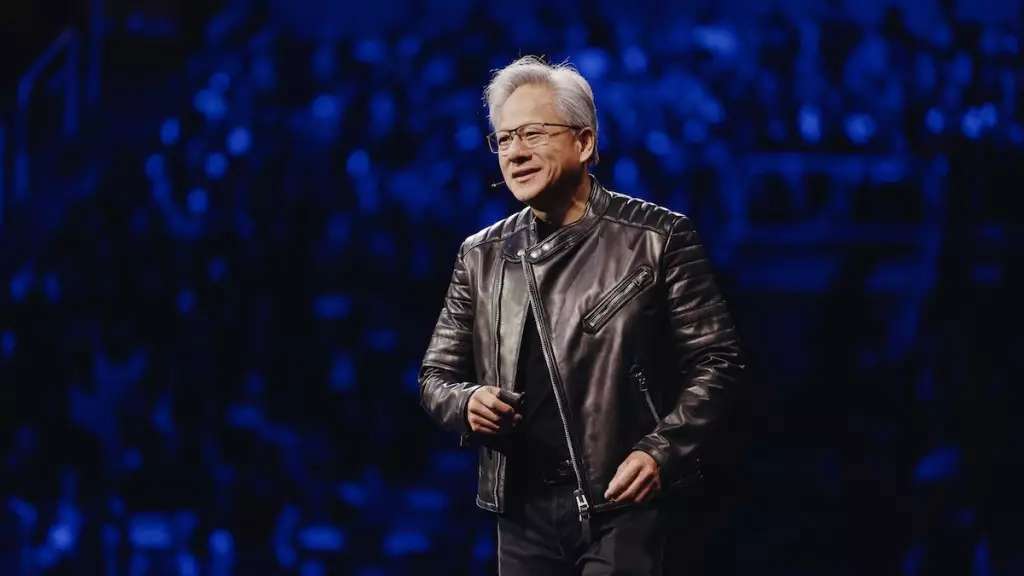The modern era is witnessing a dramatic transformation driven by advancements in artificial intelligence (AI). As articulated by NVIDIA’s visionary founder and CEO, Jensen Huang, we are on the brink of an AI revolution fueled by models that require impressive processing capabilities, boasting billions of parameters. This rapid evolution is particularly evident in the shift from training AI models to deploying them for real-time applications—essentially moving from a theoretical framework to a production environment that demands substantial computational power. In this context, data centers are no longer just repositories of information; they are evolving into robust AI factories poised to handle millions of queries with unmatched efficiency and accuracy.
Over the next few years, the projected value of AI-driven technologies is astronomical—estimated at around $1 trillion. Companies like NVIDIA are positioning themselves at the forefront of this lucrative market. At the recent GTC summit, NVIDIA introduced groundbreaking advancements, including the Blackwell Ultra AI platform, alongside innovations in neural networking, robotics, and high-speed computing. The new Blackwell architecture, already in production, is making waves by delivering a staggering 40-fold increase in performance compared to its predecessor, Hopper. This leap not only redefines how AI models are trained but also enhances their scalability, paving the way for more sophisticated applications across diverse sectors.
Redefining AI Infrastructure: A Leap Towards the Future
As we delve deeper into NVIDIA’s advancements, it becomes clear that the company isn’t merely focused on improving GPU performance. The entire infrastructure needed to support AI is undergoing a transformative shift. With the introduction of technologies such as the Vera Rubin and Vera Rubin Ultra platforms, expected to arrive by 2026 and 2027 respectively, NVIDIA aims to improve data transfer speeds significantly—an essential factor in optimizing large-scale AI systems composed of numerous interconnected chips.
Furthermore, the innovations in networking technologies—specifically the Spectrum-X and Quantum-X platforms—are set to revolutionize how AI data centers interconnect. These silicon photonic networking switches allow seamless communication between thousands of GPUs, while also promising substantial energy consumption reductions. The anticipated launch of Quantum-X Photonics InfiniBand switches later this year, followed by Spectrum-X Photonics Ethernet switches in 2026, reflects NVIDIA’s commitment to sustainability alongside power.
Potentials in Robotics and Industry: A Financial Goldmine
Looking beyond the data center transformations, it is impossible to ignore the monumental opportunity posed by physical AI, especially in the robotics and logistics sectors. Huang identified this expansive market, estimating its potential at an eye-popping $50 trillion. Whether in manufacturing, healthcare, or service industries, AI-driven automation is set to redefine operational paradigms.
NVIDIA is strategically positioning its Isaac and Cosmos platforms to seize this automation wave, enabling organizations to implement intelligent robotics solutions efficiently. The influence of AI on workplace productivity is manifesting in ways previously unimagined, and NVIDIA’s innovations are earning them a vital role in this dynamics.
Moreover, new projects like the groundbreaking GR00T N1 model—the world’s first completely customizable humanoid AI—illustrate NVIDIA’s ambition to create adaptable AI that can tackle not only routine tasks but also engage in complex problem-solving with human-like reasoning capabilities.
Pioneering the Next Wave of AI Development
NVIDIA’s roadmap reveals an unwavering commitment to continuous innovation. The anticipated Feynman architecture, set for release in 2028, is designed to utilize cutting-edge HBM memory technology. This dedication to pushing the envelope of AI hardware capabilities reiterates NVIDIA’s promise of annual architecture improvements, ensuring that they remain at the pinnacle of this competitive landscape.
In the realm of open-source collaborations, initiatives like the Dynamo software, which aids in enhancing multi-step reasoning capabilities, strengthen the ecosystem, making advanced AI models accessible for various applications. The establishment of the NVIDIA Accelerated Quantum Research Center in Boston highlights their ambition to intertwine quantum computing with AI development, further exemplifying the depth and breadth of their innovation agenda.
Each of these advancements paints a picture of a rapidly evolving AI landscape, where NVIDIA stands as a catalyst for change. Their unwavering dedication to pushing boundaries illustrates a relentless pursuit of excellence, not just for technology’s sake, but for the betterment of industries worldwide.

